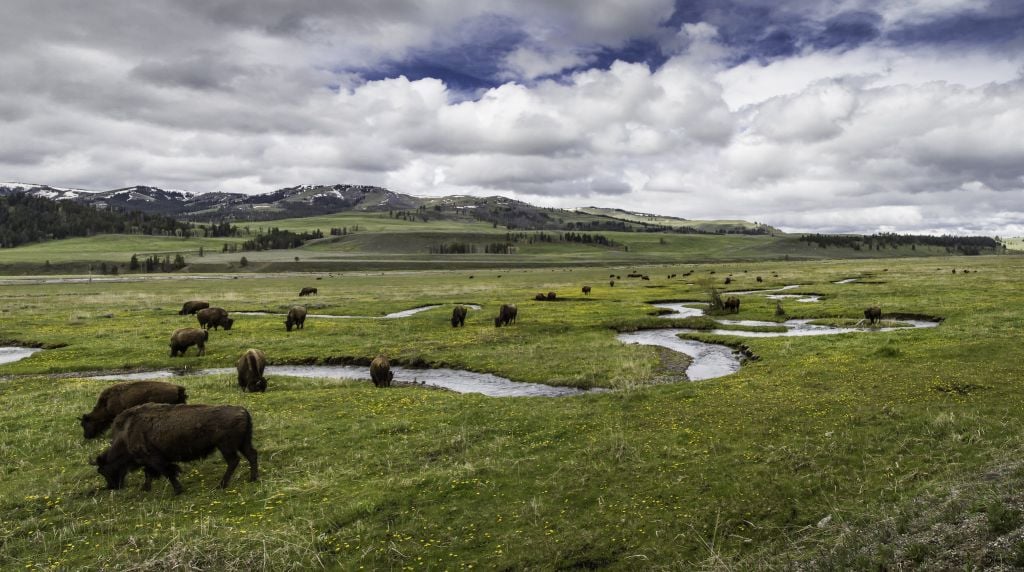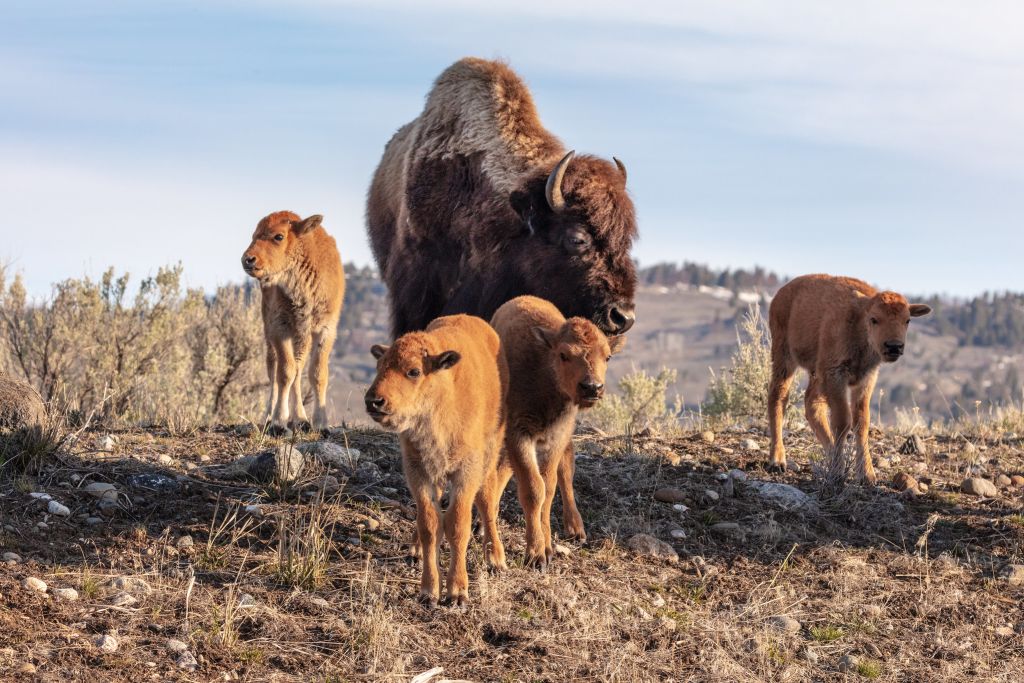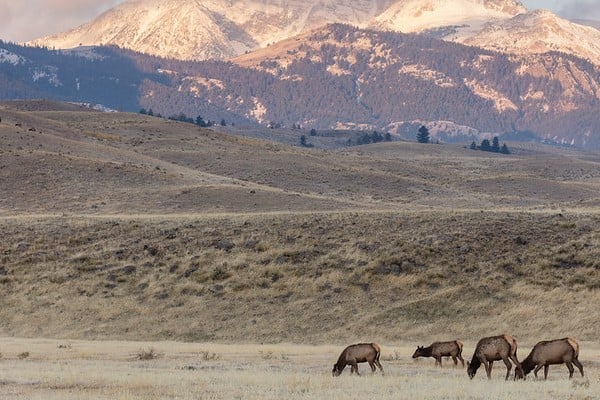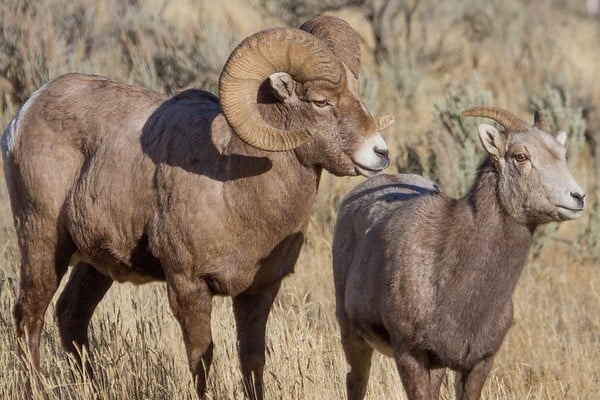Yellowstone: A Perfect Morning for Wildlife Watching
best time of day to see wildlife in yellowstone
When it comes to wildlife watching in Yellowstone National Park, timing, location, and a little luck all come into play. But it also helps to be in the company of someone who knows where to look.
“My goal is to have a three-dog day — coyote, wolf, and fox,“ Karoline Sleichter, our tour guide, announces as she slides behind the wheel of our tour bus. Sleichter is leading a Wake Up to Wildlife tour, and despite the early hour — 6:30 a.m. — she is upbeat about prospective wildlife sightings.
Even before the vehicle exits Mammoth Hot Springs Hotel, Sleichter hits the brakes and directs attention to a female elk guiding its baby up a hill.
Minutes later, there’s another animal sighting. “Coyote at nine o’clock!” she says. Heads turn in unison to the left. “Oohs” and “aahs” follow.
The tour is bound for the Lamar Valley, a wildlife-rich area in the park’s northeast corner. The region’s wide, open spaces make it a prime spot for viewing animals. Bison are particularly plentiful here, spurring a heads-up from Sleichter.
“I am not going to stop for every bison we see,” she announces. “Some people get so excited when they spot their first one, and you have to tell them, ‘There’ll be, like, 80 more.’ ”

Wolves and Bears and Moose, oh my!
There are plenty of bison, indeed. But other large mammals, notably bear and moose, are high on visitors’ wish lists, too. Wolves, which were reintroduced into Yellowstone in 1995 after a 70-year absence, are a huge draw, too. And Sleichter knows where to look for them.
“Our priority is to go to this wolf den to see if we can see anything. It’s supposed to have five pups in it,” she says, pulling off to the side of the road, where a cadre of serious wildlife watchers is peering through high-powered spotting scopes.
If the wolves are home, they’re not making it known. The bison herds are more transparent, however. After all, where could these massive beasts hide, even if they wanted to? In late spring, the bison babies — look like orange specks next to the adults.

The tour moves out of the valley, climbing into spruce and fir forests. In the distance, the mountains still snowcapped in late spring, create an epic backdrop. Sleichter pulls over at a cliff-side spot where mountain goats are known to dwell. Trying to spot them from afar is a “Where’s Waldo?” exercise, but it doesn’t take long for Sleichter’s trained eye to zero in on a mother and baby, their dainty hooves moving deftly over the rocky terrain.
There are two basic approaches to wildlife watching in the park. One is to drive until you see a lot of cars pulled over to the side of the road — a sure sign there’s something to see. Or, you can find a pullout, get out of the car, linger, and look.
That’s what Chuck Snover does. A seasonal volunteer for the nonprofit Yellowstone Forever, which works to help preserve the park, he also has a panoramic view from his perch in the organization’s shop in Gardiner, MT, at the park’s northern entrance.

“There’s wildlife all over the park. But here in the north, it’s open country so you can see the animals. They call it the Serengeti of the U.S.,” he says.
Jess Haas, program director for Yellowstone Forever Institute, takes a similar wait-and-see approach to wildlife viewing.
“No matter what kind of day you’re having, a great wildlife sighting makes it better. It doesn’t matter what kind of animal it is — a bear, a bison, a wolf — it just lifts your spirits,” she says.
On the return trip to Mammoth Hot Springs, Sleichter tallies the day’s sightings.
“So, we’ve seen two of the antlered species — deer and elk. And three of the horned species — pronghorn, mountain goat, and bighorn sheep.”
And, of course, countless bison, plus birdlife including osprey, red-tailed hawks, and mallard ducks.
Not a bad start to another glorious day in America’s oldest national park.

Dawn is the best time to search for wild animals and our Wakeup to Wildlife tours leaves bright and early to head for Lamar Valley and some of the best wildlife viewing in the park. Find the most current information on our Wake up to Wildlife tour on our website.
Washington, DC-based freelance writer Jayne Clark has been a travel reporter at USA TODAY and several other daily newspapers.
For A World of Unforgettable Experiences® available from Xanterra Travel Collection® and our sister companies, visit xanterra.com.
Want to experience Yellowstone in-depth? See what makes Yellowstone National Park a great place to work for a season or longer!